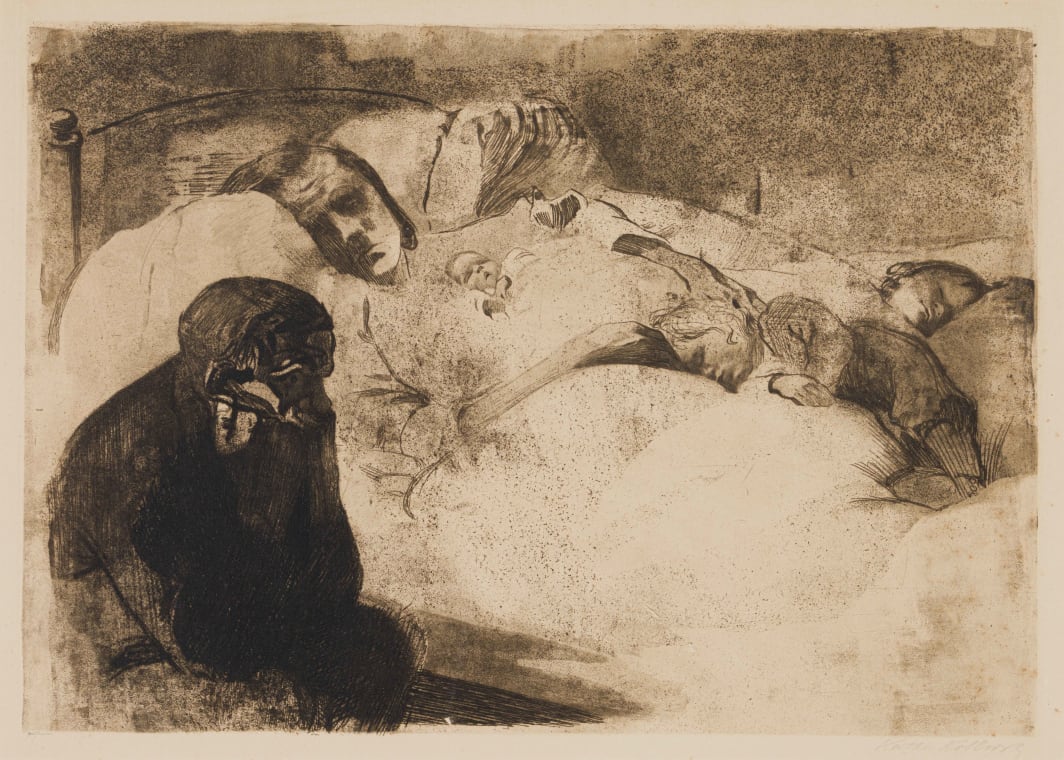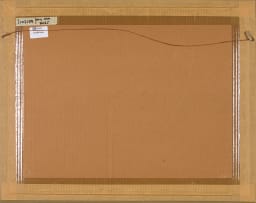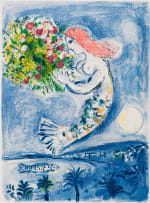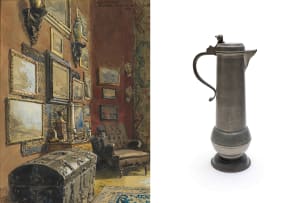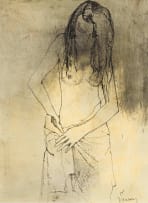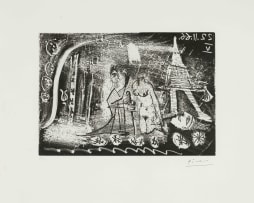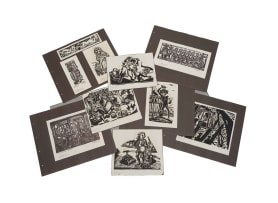Arbeitslos (Unemployment)
Käthe Kollwitz
Incl. Buyer's Premium & VAT
About this Item
signed and inscribed with the title in pencil in the margin
Notes
Käthe Kollwitz stands as one of the most powerful artistic voices of the early 20th century, a master printmaker whose career was defined by an unshakeable commitment to social justice and an empathetic, unflinching gaze upon the lives of the German working class. A truly arresting work, Arbeitslos (Unemployment) is a quintessential example of her dedication to social realism, transforming the abstract tragedy of economic collapse into a tangible, deeply personal portrait of human suffering.
The composition of Arbeitslos is immediately visceral and emotionally devastating. Kollwitz uses the sharp, raw power of etching to contrast light and profound darkness. The immediate foreground is dominated by the monolithic, shadowed figure of a man, presumably the unemployed worker, his face slumped heavily in his hands. His form is rendered in dense, crosshatched lines, conveying the oppressive weight of his despair. This figure of utter desolation acts as a psychological barrier, separating the viewer from the scene beyond.
Behind this figure, the rest of the family, the victims of the crisis, are huddled together in the stark, luminous expanse of a cramped bed. The white bedding, etched with delicate yet fragile lines, draws the eye to the mother and her children, their forms intertwined and vulnerable. They are exhausted, perhaps sickly, sleeping in close proximity for warmth and security. The stark contrast between the man’s heavy, material darkness and the family’s spectral light highlights the emotional separation caused by economic hardship: the man bears the burden alone, while the family suffers the quiet, physical consequences.
Kollwitz’s commitment to this kind of subject matter was rooted in her life in the impoverished North Berlin district of Prenzlauer Berg, where her husband, Karl Kollwitz, ran a medical practice. Daily, she bore witness to the grinding poverty, illness, and despair that industrial society inflicted on its workers, and she saw the crushing impact of unemployment on domestic life. Dating from a period of escalating economic anxiety in Germany, Arbeitslos transcends its immediate historical moment to speak to the timeless human cost of industrial and political failure.
It is this profound, humanistic reading of the working-class plight that makes Kollwitz’s work so enduringly relevant. She elevates the ordinary, domestic scene of poverty into a monumental tragedy, imbuing the figures not with pity, but with a tragic dignity. This impression is a magnificent example of her mastery of the etching medium and her unparalleled legacy as an artist of deep moral conviction.
Claire C Whitner (2016) Käthe Kollwitz and the Women of War: Femininity, Identity, and Art in Germany during World Wars I and II, Wellesley: The Davis Museum.
